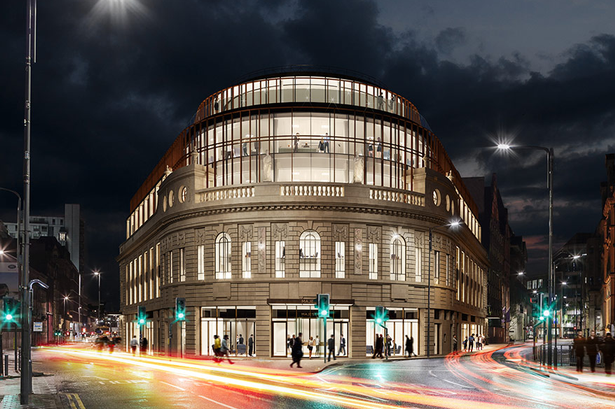The past couple of years have shone a new light on the importance of ventilation when it comes to public health. Commercial organisations have been looking at how effective their current air conditioning and ventilation systems are and how they might be adapted to make for healthier working environments.
Let’s look at this in more detail.
What is ventilation?
Ventilation is the process through which stale air is replaced with fresh air. Without proper ventilation, stale, stagnant air can soon build up. This can pose a danger to the health of people who work inside the building as bacteria and carbon can make the air inside the building more polluted than the air outside.
A stark example of this is homes located near busy roads with high levels of traffic pollution. Homes in these areas can contain dangerous levels of pollutants if the measures aren’t taken to reduce them.
The same applies to commercial buildings, whatever their size. In commercial buildings with high-usage levels, a ready supply of clean air is vital as the air inside can become stagnant very quickly.

Why is ventilation important?
A good ventilation system reduces air contaminants, draws in fresh air, and expels CO2, while controlling temperature and humidity. A well-ventilated environment has a range of other benefits. These include:
Improve Building Comfort
We spend large amounts of our time at work and the comfort of the building within which we work can have a huge impact on our well-being. Good ventilation ensures that the air quality in the building is healthy which, in turn, makes for a less-stuffy and healthier environment. Not only will people working in the building be less likely to get sick from an unhealthy office atmosphere, they will also feel happier and more comfortable on a daily basis.
Buildings with good air quality will see less days lost through staff absence and create a better atmosphere for customers and visitors.
Supports Productivity
Good air quality creates a healthier and happier environment, supporting concentration, judgement, stamina, energy levels and overall job satisfaction.
A 2017 Harvard study found a direct link between better air quality and improved decision making. It outlined how air with low levels of CO2 supported higher-level strategising by participants, and that workers in green-certified buildings scored higher on cognitive function tests. Comfortable air temperature and good air quality both contribute to higher productivity levels.
The Harvard study also estimated that doubling ventilation rates would cost companies around £30 per person per year, but the extra productivity that resulted from that investment could return an extra £4,572 per person per year.
A more energy-efficient building

Spiralling energy costs for both domestic and commercial customers is an increasing concern. A ventilation system will use energy, but there are ways to enjoy the health benefits of good air quality while keeping a lid on costs.
Energy recovery ventilation systems transfer the humidity and temperature from exhausted conditioned air to incoming fresh air. This helps to conserve energy while at the same time allowing for an increased fresh air intake.
Demand control ventilation uses CO2 sensors to calculate optimal airflow in real-time, and then make necessary adjustments to the ventilation. For instance, a room hosting a gathering of thirty people will need more ventilation than one with just one person. The system will take account of this and then send more air to the first room.
Variable speed compressors allow for hundreds of different speed settings. These can then be combined with variable blowers to enable airflow and temperature control to a precise degree while using much less energy.
How to tell if you have poor air quality
It can be difficult to ascertain if the air quality in your building is of a poor quality but there are some tell-tale signs. A general feeling of mugginess or a ‘heavy’ atmosphere that a number of the building’s users report can be an indication that it has poor air quality.
Increased incidence of allergies and lung complaints are an obvious indication, as too are irritated eyes, and escalating rates of coughing, headaches and congestion. Some symptoms of poor air quality can be more severe such as dizziness, nausea and vomiting, chills and fatigue. If you have increased staff absence due to ill-health then it may be worth investigating the air quality in your building. If you have an HVAC system installed it should be checked to see how well it’s performing and if there are any obvious issues that need addressing.
Ensuring your HVAC system is working efficiently
Having an HVAC system installed isn’t enough to ensure that you have sufficient air quality within your building. It also needs to be working as efficiently and effectively as possible. As well as the tell-tale signs of poor air quality, if your system is prone to more breakdowns and downtime, then it should be examined by experienced engineers who can get to the bottom of the problem.
In some cases, a thorough retro-commissioning process will need to be undertaken to ensure that your HVAC system operates at an optimum level for your building. This is an important part of facility management and can ultimately improve the working environment while reducing running costs.
Retro-commissioning looks at how the building’s use and layout have changed since the HVAC system was designed and installed, then sets about bringing the system into line with changed requirements.
ECS provides an industry-leading re-commissioning and retro-commissioning service. To find out more about how we work and what our retro-commissioning service includes call 01535 600688 or email info@ecs-yorkshire.co.uk

